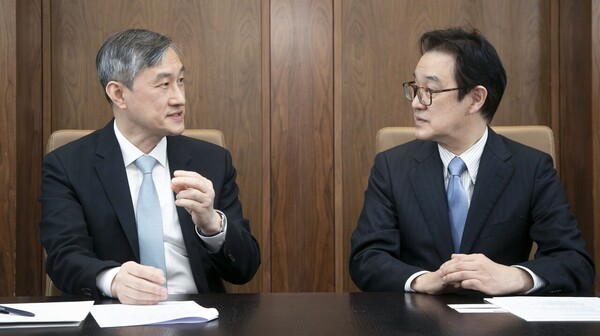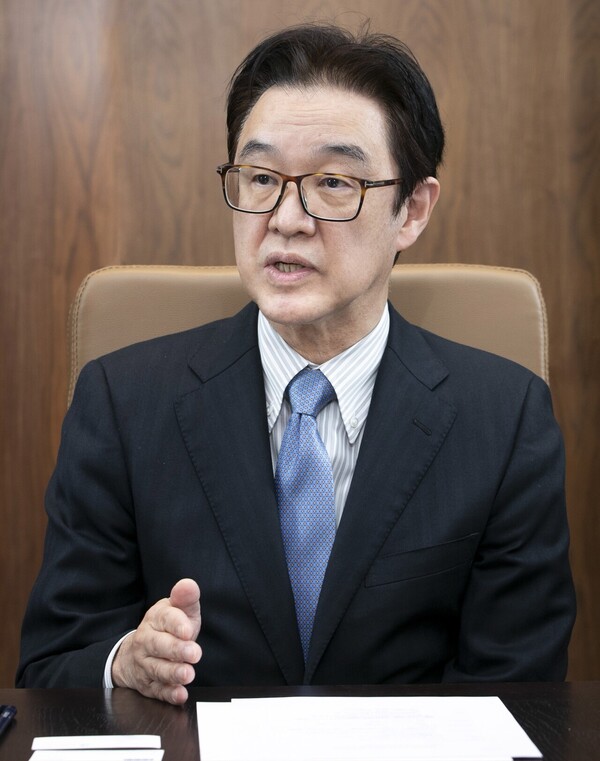The treatment of rheumatism has attained great progress in the past several years, as research on the mechanism of immunological development accumulated and innovative treatments, including biological agents, emerged.
Nowadays, the clinical value of various treatment options, including biological agents, is increasing amid the emphasis on early diagnosis and positive treatment. Besides, to reach a state of low disease activity or remission, the concept of "T2T (treat to target)," which performs patient evaluation every three months to control treatment drugs, is also emphasized.
However, due to strict insurance standards, access to innovative treatments, such as biological agents, has narrowed in Korea. As a result, experts point out that improving the treatment performance of rheumatoid diseases is also slowing down.
Korea Biomedical Review looked at the treatment of rheumatism in Korea and Japan and heard about their prescription know-how for innovative treatments, such as biological agents, and prospects for future treatment of rheumatoid arthritis from Tsutomu Takeuchi, chairman of Japan College of Rheumatology and professor of the Department of Rheumatology at Keio University Faculty of Medicine) and Lee Shin-seok, chairman of the Korean College of Rheumatology and professor of the Department of Rheumatology at Chonnam National University College of Medicine.

KBR: Rheumatoid arthritis is a disease frequently occurring in older adults. What are the trends of its outbreak in Korea and Japan that have entered a superaged society?
Professor Tsutomu Takeuchi (Takeuchi hereafter): Japan entered a superaged society quite a while ago, and the age group of rheumatoid arthritis patients has risen. In a 2019 national survey, the number of rheumatoid arthritis patients rose to 830,000, up 100,000 from a decade ago. The average of new patients also went up from 50 to 60, and the prevalence rate in the 70s also increased, following the 60s. In the textbook, rheumatoid arthritis occurs mainly among women in their 40s, and some call for revising this content.
Professor Lee Shin-seok (Lee hereafter): Situations are similar in Korea. According to a survey from January to June last year, the number of rheumatoid arthritis patients totaled 365,000, with women in their 50s accounting for the largest share. Therefore, the empirical prediction is that the age group of patients is also continuously climbing.
KBR: The “T2T (treat to target)” concept has long become a global standard in treating rheumatism. What about actual clinical scenes?
Lee: T2T is a concept to attain remission -- a period when an illness is less severe or is not affecting someone – or a state of low disease activity. In disease activity, it is closely related to joint damage and disability. Continuous accumulation of disease activity causes a lot of damage to the joints, which inevitably leads to disability. Disease activity, joint damage, and disability are related and affect the quality of life. So, these yardsticks should also be considered when treating patients based on the T2T concept.
Takeuchi : The most important point is “shared decision-making.” Specialists and patients agree on common treatment targets and proceed with treatment to attain that target. Second, it is crucial to set proper targets. For example, the treatment target could be remission depending on the patient's characteristics or lowering the disease activity. Because it is hard to set treatment targets without professional knowledge, doctors and patients should have a consulting process. Third, it is necessary to change the treatment strategy when they fail to reach set targets. They had better do this every six months.
KBR: The treatment of rheumatism has greatly developed with the introduction of biological medications. We are curious how much contribution they have made to treatment records in each country.
Takeuchi: As a result of examining 1,700 patients at Keio University Faculty of Medicine in 2013, the rate of reaching remission, which stood at 30 percent when biological medicines were first introduced, has risen to 60 percent recently. The results were largely similar in national cohort surveys. For example, a Japanese rheumatism patient group’s survey showed that responses reporting sharp improvement in symptoms thanks to biological drugs have nearly redoubled. In the Keio University Hospital, too, about 70 percent of patients are receiving treatment with biologic agents, and 30-40 percent of rheumatoid arthritis patients are also doing so across Japan.

Lee: It is difficult to answer precisely due to the need for related data. However, I guess the remission rate here might be lower than in Japan.
In establishing a treatment strategy in Korea, you need to understand it from the aspect of “insurance medicine” aside from clinical bases. It has been possible to prescribe biological medications only when we use two or more csDMARDs (conventional synthetic Disease-Modifying Anti-Rheumatism Drugs). We also could not use methotrexate (MTX) monotherapy and had to use tumor necrosis factor (TNF)-alpha drugs combined with MTX. If these therapies did not comply with insurance standards, they were all classified as eligible for cuts.
Due to these barriers of the insurance system, Korean rheumatism patients who use biological agents account for only 8 percent of the total. That is very low access to treatment compared with 30 percent in the U.S. Considering the appearance of biological drugs has sharply improved treatment performance, it is frustrating to see the corresponding ratio remains at only 8 percent. I hope payment increase or research and development will be made in rheumatoid diseases, like those on Cancer, Cardiovascular and Cerebrovascular (CCC) diseases.
KBR: The development of Janus kinase (JAK) inhibitors has diversified treatment options after csDMARD, including biological agents. What should be the criteria for selecting initial therapies after the csDMARD phase?
Takeuchi: Specialists’ treatment experiences may be very important, but even more crucial is the clinical bases on efficacy and safety to continue treatment for long periods and on more patients. In this regard, TNF-alpha inhibitors are accumulating very excellent bases. Besides, various treatment options have come into being for patients who cannot use TNF-alpha inhibitors.
Lee: In selecting drugs, we should first consider possible abnormal responses and patients’ underlying diseases. For example, doctors should check this before using drugs because Korea has many people with latent tuberculosis. They also should select injections or pills. Patients who fear needles cannot use injections, and some patients with some occupations prefer specific drugs.
KBR: Among TNF inhibitors, Golimumab has reportedly been used alone without combining with MTX. We heard that a recent Japanese study contributed to it.

Takeuchi: You’re right. In Japan, we conducted a study on the does and usage of TNF-alpha inhibitors, and they won the indication in Japan for the time worldwide. Previously, we had prescribed Golimumab 50 mg only in combination with MTX. Still, the regulator approved the use of a 100 mg dose because researchers confirmed clinical grounds that the monotherapy of Golimumab 100 mg can produce effects by itself.
KBR: In the case of JAK inhibitors, safety issues have recently occurred in America and Europe, affecting their prescription. What are the situations in the two countries?
Takeuchi: I expect JAK inhibitors will be used more as a treatment option when biological agents fail. As the countries enter a superaged society, it will be difficult to use biological agents even on older patients if they have risks.
In Korea, the society has positively expressed its opinion and managed to change the coverage standards on Sept. 1. In conclusion, the use of JAK inhibitors will be limited in patients 65 and older with a risk factor for cardiovascular incidents and experiences of cancer outbreak. Doctors will judge the continuation of drug use for patients who have already used JAK inhibitors, which will also be reflected in insurance standards.
KBR: What are the foremost tasks to be tackled in treating rheumatoid arthritis?
Takeuchi: In the Japanese clinical scenes, the main topic is ‘whether it is possible to gradually discontinue chemotherapies” amid the rising remission rate through biological agents. Complete stoppage of treatment can pose a heavy burden on patients. Therefore, the current situation requires clinical bases concerning various situations, such as extending administrative intervals of biological agents or reducing their dose. If biologic agents are combined with MTX, which drugs should they discontinue or reduce?
Lee: I agree. The European Alliance of Associations for Rheumatology recommends reducing biological agents while maintaining csDMARD. In comparison, the American College of Rheumatism recommends maintaining biologic medications while reducing or discontinuing csDMARD. Asia lacks related clinical bases and needs to accumulate them.

